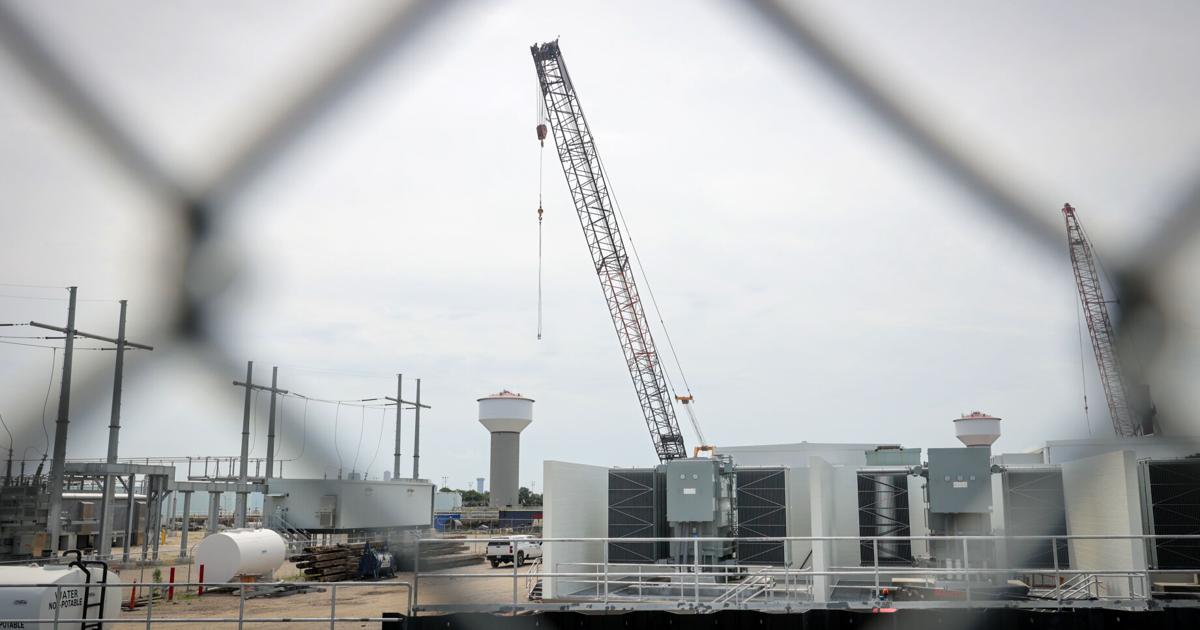As a low-pressure system threatens to deluge the city Thursday, a critical flood-protection project the Sewerage and Water Board has said for years would be ready for hurricane season is still not operational.
The agency announced last week that its new multi-million dollar power complex, designed to provide reliable electricity to the city’s drainage pumps, would be delayed until next month, and likely not be completely working until October.
While residents only just learned of the revised timeline, Jacobs Engineering, the construction manager on the project, warned in a January report that important pieces of the project were “severely behind schedule” and wouldn’t be ready until this fall or possibly the end of the year.
The report detailed serious contractor errors, including “significant deficiencies” in quality inspections on underground components that could have warranted a stop-work order. Instead of stopping the work, Jacobs said it started conducting its own daily inspections and spent significant time resolving issues.
Water board officials said the quality inspections issues had been resolved, and the recent delay is because more time is needed for equipment testing.
The report, obtained through a public records request, was written to justify a $3 million contract amendment for Jacobs, bringing its total compensation for the project to $19 million.
The firm also did not respond to questions to about the report.
Slipping timeline
The $300 million complex at the S&WB’s campus on South Claiborne Avenue is meant to solve a decades-old problem: unreliable power for the city’s ancient drainage pumps, which run on an obsolete frequency. At the heart of the complex is a new Entergy substation, designed to deliver modern power to the pumps.
Considered one of the city’s most important infrastructure projects, the complex will replace notoriously shaky turbines and generators the S&WB now uses to produce its own power. The in-house equipment tends to break down during heavy storms, knocking the pumps offline when they’re most needed.
For nearly two years, the water board consistently maintained that the power complex would be ready for the 2025 hurricane season, which began in June. The steadiness of that timeline, set in mid-2023 after earlier delays, has been notable as cost overruns, political arguments and cratered funding commitments have threatened progress.
The first sign of delays came in March, when the S&WB set a staggered ramp-up schedule. That schedule had the power complex coming online in a limited capacity in July and full operation by September. Those dates have since been pushed back by a month.
Once the power complex is up and running, the Entergy substation will channel electricity through frequency changers that adapt it for the drainage pumps. The three frequency changers can each produce half the megawattage needed to run the drainage system at maximum capacity, meaning only two are needed during the heaviest rainfall and the third can serve as backup.
The staggered deadline announced in March showed the first frequency changer would be ready in July, followed by the other two in August and September. Now, the first one is expected to be ready by August and the other two in October, according to the latest S&WB press release.
The Jacobs report said the frequency changers were “severely behind schedule,” and noted the final two would be fully operational by the end of the year at the latest. Water board officials said the scheduling concern referred to manufacture and delivery of the frequency changers, not the installation and testing issues they said led to the recent delay.
Meanwhile, the S&WB now says construction of a new turbine to back up the substation won’t be done until November. It was previously supposed to be ready in September.
The S&WB power supply will significantly improve even with a single new frequency changer, which can deliver 22 megawatts from the substation. The system needs 45 megawatts to run at peak demand, and the actual availability fluctuates above and below that amount, depending on which equipment is in service.
Not a panacea
Water board officials said Wednesday they had 67.5 megawatts available, as forecasters warned a tropical disturbance could develop along the coast and cause flash flooding over the next two days. Rainfall amounts could vary widely, with three to five inches generally expected in the New Orleans region but possibly double that amount in isolated areas, according to forecasters.
“You never know when these pop up storms may come up and whack you,” Interim Executive Director Ron Spooner said.
Getting the South Claiborne Avenue power complex to the finish line has been the S&WB’s top priority under Mayor LaToya Cantrell, who chairs the agency’s governing board, but officials stress it won’t solve New Orleans’ drainage woes.
For starters, many of the city’s 72,000 catch basins, which drain stormwater from the street, are in terrible shape after decades of neglect by City Hall, which transferred responsibility for their maintenance to the S&WB this year. Agency officials say that was largely an unfunded mandate, with the city’s $13 million contribution this year barely enough to get started.
Even more concerning, the drainage system overall isn’t designed to handle the intense downpours that have become increasingly common in New Orleans and elsewhere. Officials say the system can generally handle one inch of rain in the first hour of a storm and half an inch thereafter.
A minimum of five storms since December 2023 have exceeded that threshold, resulting in widespread street flooding. Officials say system-wide upgrades to handle larger rain volumes will require massive investment and decades to accomplish, a tall order when the S&WB already has a $1 billion capital backlog.
Editor’s note: This post was updated July 17 with information from Sewerage and Water Board officials concerning the Jacobs report

